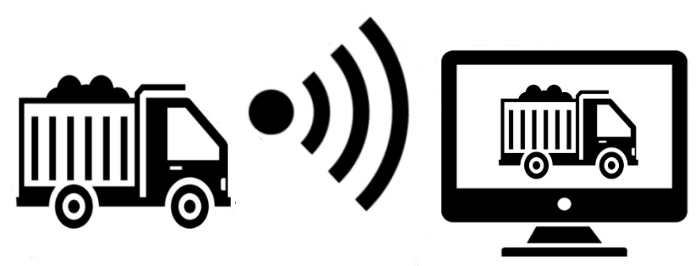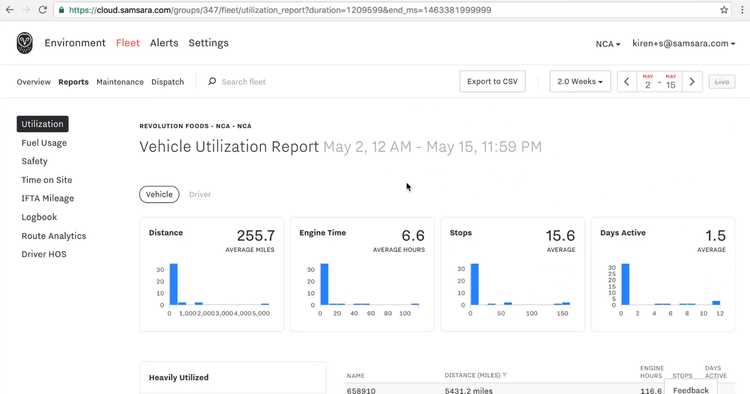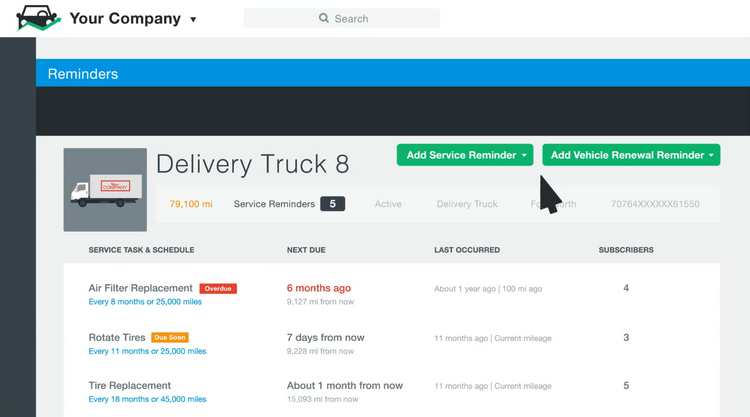What Is Fleet Telematics and How Does It Work?
A vital part of fleet management systems, telematics provides a comprehensive overview of fleet performance using GPS tracking, dash cam recorders, and other specialty hardware. Fleet telematics consolidates vehicle tracking information into one location, like a dispatch office or garage, to gain up-to-date or real-time information about vehicles or driver behavior.
How Does Telematics Work?
Vehicle telematics combines onboard sensors and plug-ins (GPS, cameras, etc) with telecommunication systems (cellular, satellite). Today, fleet tracking is via wireless or GPS technology, sending real-time information taken from sensors like GPS, video recorders, and vehicle sensors. The data goes straight from the sensors to a cloud-based server that can be accessed from anywhere with an internet connection.

Depending on the exact vehicle, many device options are available. Information gathered by the vehicle’s computer is shared through the onboard diagnostics II (OBD-II) port or CAN-BUS port with a SIM card. Telematics software, usually part of a fleet management system, analyzes the data to find ways to improve performance.
Types of telematics devices and vehicle sensors include:
- Electronic logging device (ELD)
- Fuel gage
- GPS receiver
- Odometer
- Smartphone
- Trailer or container tracking
Benefits of Telematics for Fleets
Often part of fleet management and maintenance systems, telematics are primarily used to track vehicle conditions and driver behavior, which can have several benefits for fleet management.
Reduce Delays
Telematics like GPS trackers note vehicle locations at any given time. Knowing where a vehicle is and where it is supposed to be is critical for keeping the supply chain moving. And if any unexpected road closures impact a route, owners and drivers can work together to reroute as efficiently as possible.
Driver Safety
Other mobile devices record vehicle conditions like fuel usage, mileage, and average speed. These regular engine diagnostics lead to timely maintenance schedules, preventing breakdowns and improving driver safety. Owners can review which routes are best for drivers, put the least wear and tear on vehicles, or are simply the fastest for deliveries.

Better Driver Habits
Telematics helps fleet owners monitor drivers’ behavior on the road. Monitoring can be as simple as whether or not a driver regularly wears a seat belt or if there are multiple instances of harsh braking along a route. Good driver habits can lead to lower insurance premiums for the entire fleet. In an accident, emergency transponders can automatically send distress messages if a driver cannot get help for themselves. Telematics also provides an accurate way to record hours of service so drivers get the time off they deserve.
Lower Maintenance Costs
Fleet Telematics allows companies to manage real-time data for fuel and vehicle diagnostics. This helps maintain the fleet with proactive maintenance instead of waiting for vehicles to break down and spending money on repairs. Telematics can also be found in fleet maintenance software, a sub-category of fleet management that tracks preventive service reminders. With a well-maintained fleet, owners can save money that would have been spent on replacing vehicles.

The Future of Telematics
In the past, telematics solutions were limited by when and where data was uploaded. Today, they can show where vehicles are, where they are heading, and if the operator is following. These real-time results allow faster responses to travel condition changes, such as severe weather or road closures.
Other upcoming changes in telematics include:
Autonomous Driving
One major change in fleet operations will be the use of automated or driverless vehicles in the coming years. While still far away from reality, vehicle telematics systems are already preparing for this change by collecting data now. How real drivers respond to situations on the road can help train AI in the future.
Video Telematics
Video telematics is rising because smaller, high-quality cameras are easier to install into all vehicles. For instance, cab cams record the vehicle’s interior, while dash cams record the outside. While they can provide useful footage to prove who is at fault after an accident, some drivers are wary of being recorded for hours at a time. Fortunately, there are now dash cams available that continuously record but only save and upload footage after sensors indicate an accident has happened.
Other video telematics can record container and trailer conditions. As a result, drivers and managers can know about changing conditions in the back without opening up the cargo on the road.
Electric Vehicles
Finally, many fleet owners are going green with electric vehicles. Telematics devices have adjusted how fuel consumption is measured in electric vehicles compared to gas-powered ones. There are also different maintenance standards to address.
Commercial Usage
In addition to optimizing fleet operations, telematics has other commercial uses. For instance, automotive insurance companies use “black box” devices to record customer behavior behind the wheel and offer discounts for good driving habits. Rideshare services utilize telematics as well for vehicle and passenger tracking.
Telematics FAQ
How is telematics different from fleet management?
Fleet management is more encompassing than just telematics. For example, in addition to vehicle tracking, fleet management systems might include tools for acquiring new vehicles, ordering and storing replacement parts for maintenance, and using a geographic information system (GIS) to map out optimized routes.
Telematics uses GPS or similar recording devices to track vehicle data; fleet management systems then use that data to schedule maintenance, plan routes, or correct driver behavior.
What’s the difference between telematics and GPS?
Telematics tracks vehicle data in various ways, such as using cab or dash cams to record driver behavior while working. However, GPS can track more than just vehicles, and are often used for land surveys, construction, and emergency services. Of course, GPS-enabled devices can be used to track vehicles as well. In short, telematics may use GPS, but GPS is not always used for telematics.
